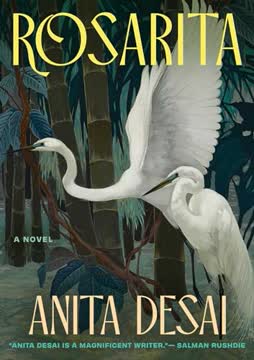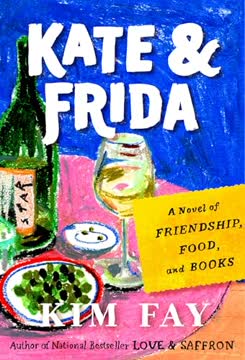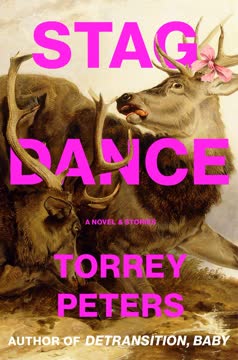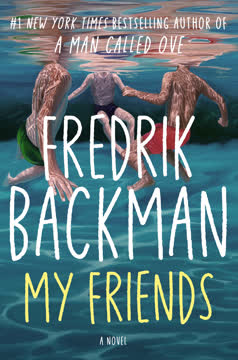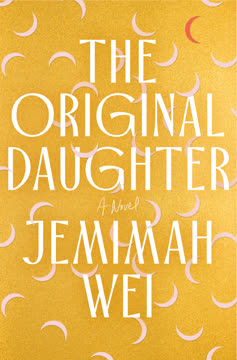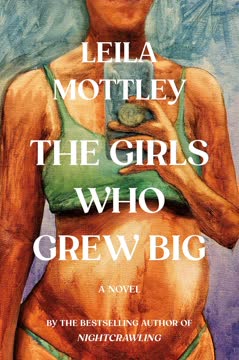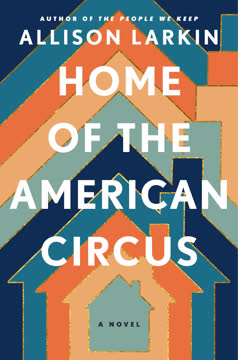Plot Summary
East Gladness, Nowhere Town
East Gladness is a small, overlooked New England town, a place where the past and present blur, and the landscape is marked by decay, resilience, and the ghosts of those who never left. The town is a microcosm of working-class America, with its overgrown lawns, shuttered businesses, and a population that feels both invisible and deeply rooted. The narrator, Hai, introduces us to this world, where the river is both a boundary and a lifeline, and where the only things that stop are the people themselves. The town's history is layered with loss, migration, and the slow erosion of dreams, setting the stage for a story about survival, memory, and the search for meaning in the margins.
Bridge at the Edge
Hai, a nineteen-year-old Vietnamese American, stands on King Philip's Bridge, contemplating ending his life. The bridge, a relic of failed optimism, becomes the site of an unexpected intervention when Grazina, an elderly Lithuanian woman, spots him and calls him back from the edge. Their awkward, life-saving encounter leads Hai into Grazina's home, where a strange, tender connection forms. The bridge is both literal and symbolic—a threshold between despair and the possibility of renewal, and the moment marks the beginning of Hai's journey back into the world, tethered by the fragile kindness of a stranger.
Grazina's Kitchen Gospel
Grazina's home is a cluttered, timeworn sanctuary filled with owl figurines, old magazines, and the detritus of a long, complicated life. Over cigarettes and stories, Grazina and Hai share their wounds—her dementia and loneliness, his addiction and estrangement from his mother. Grazina's rituals, like crushing bread rolls in the mud to banish sorrow, become acts of shared healing. She offers Hai a place to stay, and together they form a makeshift family, navigating the daily challenges of memory loss, poverty, and the need for connection. Their relationship is built on small acts of care, humor, and the mutual recognition of pain.
Bread, Pills, and Ghosts
Hai becomes Grazina's caretaker, managing her complex regimen of pills and the unpredictable tides of her dementia. The house is haunted by the ghosts of Grazina's past—her lost family, her daughter Lina, and the traumas of war and migration. Hai, too, is haunted: by the death of his friend Noah, his failed attempts at college, and his mother's disappointment. The two navigate hallucinations, kitchen disasters, and the daily grind of survival, finding solace in each other's company. The boundaries between caretaker and cared-for blur, as both seek redemption and a sense of belonging.
HomeMarket: Thanksgiving Forever
Hai finds work at HomeMarket, a fast-casual restaurant that promises "Thanksgiving every day." The crew is a patchwork of misfits: BJ, the overzealous manager with wrestling dreams; Wayne, the rotisserie chicken master; Maureen, the foul-mouthed cashier; Russia, the drive-thru kid; and Sony, Hai's neurodivergent cousin. The restaurant is both a sanctuary and a site of exploitation, where the rituals of food service—reheating, serving, cleaning—become a way to anchor oneself in the world. The camaraderie of the crew, their banter and shared struggles, offers Hai a sense of purpose and community, even as the work is grueling and the pay meager.
The Art of Surviving
Hai's addiction to painkillers shadows his every move, a secret he manages with the same precision as Grazina's pills. Flashbacks reveal his failed attempt at college, his mother's sacrifices, and the lies he tells to protect her hope. A stint in rehab is both a reprieve and a revelation, exposing the cycles of trauma, poverty, and the thin line between survival and self-destruction. The narrative explores the ways people cope—with humor, with stories, with small rituals—and the cost of carrying the weight of other people's dreams. Survival is an art, learned in kitchens, on the line at HomeMarket, and in the quiet moments of care.
Sergeant Pepper's War
As Grazina's dementia worsens, she and Hai retreat into elaborate role-play, reenacting World War II scenarios where Hai becomes "Sergeant Pepper," her American savior. These games are both coping mechanisms and acts of love, allowing Grazina to process her trauma and Hai to find meaning in caretaking. The boundaries between reality and fantasy blur, and the house becomes a battlefield, a sanctuary, and a stage for their shared fears and hopes. Through these performances, they confront the violence of history, the pain of memory, and the possibility of forgiveness.
The Penguin and the Diamond
Sony, Hai's cousin, is obsessed with the Civil War and dreams of finding a diamond supposedly embedded in his absent father's hand. His neurodivergence is both a challenge and a source of unique insight, and his relationship with Hai is marked by loyalty, misunderstanding, and shared wounds. Together, they embark on a quixotic journey to Vermont, accompanied by the HomeMarket crew and Grazina, in search of the diamond—a quest that is as much about healing as it is about closure. Along the way, they confront family secrets, the limits of storytelling, and the meaning of home.
Corn Cake and Cornbread
HomeMarket's signature corn bread is revealed to be more cake than bread—a metaphor for the small deceptions that sustain both business and personal life. The crew faces layoffs, corporate pressure, and the indignities of low-wage labor. The restaurant becomes a battleground for dignity, with BJ's wrestling ambitions, Maureen's conspiracy theories, and the daily grind of serving a community that is itself struggling. Food, in all its processed, reheated glory, is both comfort and con, and the rituals of service become acts of resistance against despair.
The Emperor's Butchery
A side job at a local slaughterhouse exposes the crew to the brutal realities of meat production. The killing of hogs, the blood and chaos, become metaphors for the violence embedded in everyday life—the violence of poverty, of history, of the body. The experience is both traumatic and bonding, forcing the characters to confront their own complicity and the ways in which survival often requires the sacrifice of others. The "emperor hogs" of legend, bred for the tables of the powerful, echo the fate of the workers themselves—used up and discarded by systems that demand endless productivity.
Family, Lies, and Loss
Hai's relationship with his mother is fraught with love, disappointment, and the burden of unfulfilled dreams. Both are haunted by the past—her sacrifices as a refugee, his failures as a son. The family is fractured by addiction, incarceration, and the lies told to protect one another. Sony's quest for his father's diamond is revealed to be a search for connection and meaning in a world that offers little of either. The narrative explores the ways families survive—through denial, through hope, through the stories they tell themselves and each other.
The Great Escape Attempt
As Grazina's condition deteriorates, social services move to place her in a nursing home. Hai and Grazina stage a desperate, imaginative escape, riding her scooter through the fog in a final bid for freedom. Their journey is both literal and symbolic—a last stand against the institutional forces that seek to contain and erase the vulnerable. The escape is doomed, but it is also an act of dignity, a refusal to go quietly. In the end, Grazina is taken away, and Hai is left with the memory of their shared resistance.
The End of the Line
With Grazina gone, Hai is adrift. He gives away the last of his money to help Sony and Aunt Kim, and finds himself sleeping in a dumpster behind HomeMarket, contemplating the cycles of waste and renewal that define his world. The crew disperses, the restaurant changes hands, and the town continues its slow, stubborn existence. Hai's relationship with his mother remains unresolved, but there is a sense of acceptance—a recognition that survival is itself a form of grace, and that the small acts of care and connection are what endure.
The Last Supper
In the final scenes, Hai and Grazina share a late-night meal at a diner, a moment of quiet communion before the end. The world outside is indifferent, but inside the ritual of eating, of sharing stories, becomes an act of defiance against oblivion. The salamanders crossing the parking lot, the music on the radio, the taste of coffee and bread—these small, sensory details become the threads that tie the characters to life, to each other, and to the possibility of gladness, however fleeting.
The Dumpster and the Stars
Hai, now alone, lies in a dumpster behind HomeMarket, talking to his mother on the phone and looking up at the stars. The world is unchanged—full of suffering, loss, and the relentless demands of survival—but there is also beauty, connection, and the stubborn persistence of hope. The novel ends with a sense of transcendence found not in grand gestures, but in the quiet, everyday acts of care, memory, and imagination that make life bearable.
The Emperor of Gladness
The story closes with Hai reflecting on the lives that have touched his own—the dead, the lost, the forgotten—and the ways in which their stories continue to shape him. The emperor of gladness is not a person, but a state of being: the ability to find joy, however brief, in the midst of suffering; to create meaning out of chaos; and to persist, against all odds, in the act of living. The novel ends with a benediction for all who survive, and a recognition that, in the end, we are all emperors of our own small gladness.
Characters
Hai
Hai is a young Vietnamese American man adrift in the aftermath of loss, addiction, and failed dreams. Estranged from his mother and haunted by the death of his friend Noah, he is both caretaker and cared-for, moving through the world with a mix of cynicism, humor, and deep vulnerability. His relationship with Grazina becomes a lifeline, offering him a sense of purpose and belonging. Hai's psychological landscape is marked by guilt, longing, and the struggle to reconcile his own needs with the expectations of family and society. Over the course of the novel, he moves from despair to a hard-won acceptance, learning to find meaning in small acts of care and connection.
Grazina
Grazina is an elderly Lithuanian woman living with dementia, whose life is a tapestry of trauma, migration, and survival. Her home is a museum of memory, filled with owl figurines and relics of the past. She is both sharp and forgetful, capable of biting humor and profound tenderness. Her relationship with Hai is transformative for both, as they navigate the challenges of illness, poverty, and the encroaching loss of self. Grazina's psychological complexity lies in her oscillation between lucidity and confusion, her fierce independence, and her longing for dignity in the face of decline. She is a survivor, a storyteller, and, in her own way, an emperor of gladness.
Sony
Sony is Hai's neurodivergent cousin, obsessed with the Civil War and driven by a quest to find a diamond in his absent father's hand. His disability shapes his worldview, making him both vulnerable and uniquely insightful. Sony's relationship with Hai is marked by deep loyalty, misunderstanding, and a shared sense of being outsiders. His journey is one of seeking connection, meaning, and a place in a world that often excludes him. Sony's innocence is both a shield and a source of pain, and his story is a meditation on the costs and gifts of difference.
BJ (Big Jean)
BJ is the manager of HomeMarket, a woman of formidable presence and boundless energy. Her dreams of wrestling stardom are both a source of pride and a mask for deeper wounds. She is a leader, a caretaker, and a performer, whose need for validation drives her to both inspire and alienate those around her. BJ's psychological complexity lies in her oscillation between confidence and vulnerability, her desire to be seen, and her struggle to reconcile her ambitions with the realities of her life. She is both comic and tragic, a figure of resilience and longing.
Maureen
Maureen is the foul-mouthed, world-weary cashier at HomeMarket, a woman whose humor and skepticism mask a deep well of pain. She is a survivor of loss—her son's death, her own health struggles—and her conspiracy theories are both a coping mechanism and a form of resistance. Maureen is fiercely loyal to her crew, and her relationship with Hai is marked by a rough tenderness. Her psychological landscape is shaped by grief, defiance, and the need to find meaning in a world that often seems senseless.
Wayne
Wayne is the rotisserie chicken master at HomeMarket, a man whose identity is tied to his craft and his family legacy. He is a figure of quiet strength, carrying the weight of generational trauma and the expectations of masculinity. Wayne's pride in his work is both a source of dignity and a shield against the racism and indignities he faces. His psychological complexity lies in his struggle to maintain his sense of self in a world that devalues his labor and his history.
Russia
Russia is the drive-thru kid at HomeMarket, a young man from a post-Soviet immigrant family, marked by alienation and a restless creativity. His origami penguins, blue hair, and sardonic humor set him apart, and his relationship with his sister's addiction is a source of both pain and motivation. Russia's psychological landscape is shaped by displacement, the search for belonging, and the need to create beauty in the margins.
Hai's Mother
Hai's mother is a Vietnamese refugee who has sacrificed everything for her son's future. Her pride and disappointment in Hai are intertwined, and her love is both a source of comfort and pressure. She is haunted by the losses of war, migration, and the death of her own mother. Her psychological complexity lies in her struggle to reconcile her hopes for Hai with the realities of their lives, and her own need for recognition and rest.
Aunt Kim
Aunt Kim is Sony's mother, a woman marked by estrangement, incarceration, and the burden of single motherhood. Her relationship with Sony is fraught with guilt, love, and the weight of secrets. She is both a victim and a survivor, navigating the systems that have failed her and her son. Her psychological landscape is shaped by regret, resilience, and the longing for redemption.
Lucas
Lucas is Grazina's son, a pharmacist who is both caring and emotionally distant. His approach to his mother's decline is pragmatic, focused on safety and efficiency, but he is also haunted by the complexities of their relationship and the traumas of their shared past. Lucas's psychological complexity lies in his struggle to balance duty and detachment, and his inability to fully connect with the people he loves.
Plot Devices
Dual Narratives of Memory and Survival
The novel employs a dual narrative structure, weaving together the present-day struggles of Hai and Grazina with flashbacks to their respective pasts—Hai's childhood, his mother's sacrifices, Grazina's war-torn youth. This structure allows for a deep exploration of how memory shapes identity, how trauma is inherited and transformed, and how the act of storytelling becomes a means of survival. The narrative blurs the boundaries between reality and imagination, using role-play, hallucination, and fantasy as both coping mechanisms and windows into the characters' inner lives.
Symbolism of Food and Labor
Food is a central motif, symbolizing both the comforts and deceptions of daily life. HomeMarket's corn bread—more cake than bread—becomes a metaphor for the small lies that sustain individuals and communities. The rituals of cooking, serving, and eating are acts of care, resistance, and identity. The labor of food service, with its routines and indignities, is both a source of exploitation and a site of solidarity, where characters find meaning and connection in the midst of precarity.
The Bridge and the River
King Philip's Bridge and the river it spans are recurring symbols of transition, danger, and the possibility of renewal. The bridge is the site of Hai's near-suicide and his rescue by Grazina, marking the threshold between despair and hope. The river is both a boundary and a lifeline, a place where the past is washed away and the future remains uncertain. These motifs underscore the novel's themes of migration, survival, and the search for belonging.
Role-Play and Imagination
As Grazina's dementia worsens, she and Hai retreat into elaborate role-play, reenacting wars and escapes as a way to process trauma and maintain dignity. These performances blur the line between reality and fantasy, allowing the characters to confront their fears, rewrite their histories, and find moments of joy and connection. Imagination becomes both an escape and a form of resistance against the erasure of self and history.
The Emperor Hog and the Butchery
The legend of the "emperor hogs," bred for the tables of the powerful, becomes a metaphor for the violence embedded in everyday life—the violence of poverty, labor, and history. The scenes in the slaughterhouse are both literal and symbolic, forcing the characters to confront the costs of survival and the ways in which systems demand sacrifice from the most vulnerable. The emperor of gladness is both a figure of power and a reminder of the fragility of joy.
Foreshadowing and Circularity
The novel is rich in foreshadowing and circular motifs—scenes, phrases, and symbols recur in altered forms, suggesting the inescapability of certain patterns and the possibility of transformation. The story's structure mirrors the cycles of addiction, memory, and survival, with characters returning to the same places, questions, and wounds, each time changed by the journey.
Analysis
**A luminous elegy for the working class, the immigrant, and the forgotten, The Emperor of Gladness is a novel about survival, memory, and the stubborn persistence of hope in the face of erasure. Ocean Vuong crafts a world where the margins are the center, where the rituals of food, labor, and care become acts of resistance against despair. Through the intertwined lives of Hai, Grazina, and the HomeMarket crew, the novel explores the costs of survival—addiction, loss, the slow violence of poverty—and the ways in which small acts of kindness, imagination, and connection can redeem even the bleakest circumstances. The book interrogates the stories we tell ourselves and each other—the lies that sustain us, the fantasies that heal, and the truths that wound. In a world that demands endless productivity and punishes vulnerability, Vuong finds beauty in the broken, dignity in the discarded, and gladness in the act of enduring. The Emperor of Gladness is ultimately a testament to the power of community, the necessity of storytelling, and the possibility of joy, however fleeting, in the midst of suffering.
Last updated:
FAQ
Synopsis & Basic Details
What is The Emperor of Gladness about?
- A young man's unexpected refuge: The novel centers on Hai, a Vietnamese American navigating addiction and estrangement, who is pulled back from a suicide attempt on a bridge by Grazina, an elderly Lithuanian immigrant living with dementia.
- A makeshift family in a forgotten town: Hai becomes Grazina's caretaker in her dilapidated home in East Gladness, a working-class New England town marked by decay and hidden histories, forming an unlikely bond built on shared vulnerability and small acts of care.
- Finding belonging in the margins: The narrative follows Hai as he finds work and community among the diverse crew of a local fast-food restaurant, HomeMarket, while grappling with his past, his family's secrets, and the unpredictable tides of Grazina's memory and his own struggles.
Why should I read The Emperor of Gladness?
- Luminous prose and emotional depth: Ocean Vuong's signature lyrical writing elevates the everyday struggles of his characters, imbuing moments of pain and connection with profound beauty and emotional resonance.
- Unique exploration of memory and trauma: The novel offers a complex portrayal of dementia and intergenerational trauma, using fragmented narratives, symbolism, and imaginative role-play to delve into the characters' psychological landscapes.
- A powerful testament to human resilience: Through its depiction of a diverse cast of working-class characters finding dignity, community, and fleeting moments of "gladness" amidst hardship, the book offers a moving meditation on survival and the search for meaning in overlooked lives.
What is the background of The Emperor of Gladness?
- Setting in a post-industrial New England town: The story is deeply rooted in East Gladness, a fictional town in Connecticut, reflecting the economic decline, social challenges, and layered history of many real-world post-industrial American communities along the Connecticut River.
- Themes of immigration and displacement: The characters' diverse backgrounds (Vietnamese, Lithuanian, Russian, Southern, etc.) highlight the ongoing impact of global conflicts, migration, and the search for belonging in a new, often indifferent, country.
- Exploration of the opioid crisis and its impact: Hai's struggle with addiction and the presence of drug use and overdose in the town and at his workplace subtly reflect the widespread impact of the opioid epidemic on American communities.
What are the most memorable quotes in The Emperor of Gladness?
- "The hardest thing in the world is to live only once.": This opening line immediately establishes the novel's thematic focus on the weight of a single life and the desire for multiplicity or escape, setting a tone of existential reflection on existence and memory.
- "We murder ourselves... by remembering.": This chilling insight, born from observing Grazina's struggle with memory, suggests that confronting the past can be a destructive act, highlighting the complex relationship between memory, trauma, and self-preservation in the novel.
- "There's so much room in a person, there should be more of us in here. There shouldn't be just one.": Spoken by Hai in the novel's final moments, this quote encapsulates the theme of finding vastness and connection within the self and others, suggesting that even in isolation, human experience holds immense, shared space.
What writing style, narrative choices, and literary techniques does Ocean Vuong use?
- Lyrical and fragmented prose: Vuong employs a distinctive poetic style, characterized by vivid imagery, sensory details, and a non-linear, fragmented structure that mirrors the fractured nature of memory and trauma.
- Shifting perspectives and timelines: The narrative fluidly moves between Hai's present experiences, flashbacks to his and Grazina's pasts, and moments of imaginative role-play, creating a layered and complex understanding of the characters and their histories.
- Symbolism and metaphor: The novel is rich with recurring symbols (owls, bread, the river, specific brands, food items) and extended metaphors (war, the body as a room, the sentence as a battle line) that deepen thematic exploration and invite multiple interpretations.
Hidden Details & Subtle Connections
What are some minor details that add significant meaning?
- The recurring motif of owls: Owl figurines fill Grazina's house, symbolizing wisdom, vigilance, and perhaps a connection to the unseen or the past, becoming her "calling card" and a source of comfort amidst her confusion.
- Specific brand names and products: References to Stouffer's Salisbury steak, HomeMarket corn bread, Nike boots, UPS jackets, and even specific car models ground the narrative in American consumer culture and labor, highlighting the characters' place within these systems and the unexpected meanings they find in mass-produced items.
- The significance of hands and touch: Repeated descriptions of hands—Grazina's cracked hands, Wayne's calloused hands, Sony tracing his scar, Hai touching others—emphasize the importance of physical connection, labor, and the ways bodies carry history and emotion.
What are some subtle foreshadowing and callbacks?
- The initial description of the river: The river is introduced as a place where "memory of water never reached this century" and later as the "morgue of our dreams," subtly foreshadowing its role in carrying away lives and memories, including Hai's near-suicide attempt and the disposal of waste.
- Grazina's early mention of her brother Kristof: Her initial, seemingly random, mention of a brother gains tragic weight when her dementia episodes later center on his death under rubble, revealing a deep, buried trauma that surfaces in her confusion.
- The repeated phrase "Okay": This simple word, used by Hai, Sony, and others, evolves from a dismissive response to a profound affirmation of acceptance and presence, particularly in Sony's act of writing "okay" on Hai's face, symbolizing a quiet act of care and understanding.
What are some unexpected character connections?
- Hai's connection to Tom the mechanic: The brief, tender encounter with Tom, the mechanic with the missing ear, who is also a HomeMarket regular, reveals a shared vulnerability and search for connection outside of defined relationships, highlighting the unexpected intimacy found in transient encounters.
- Maureen's link to the "Mandela effect" and Star Wars: Maureen's seemingly outlandish conspiracy theories about hollow earth and the Mandela effect, particularly her belief that C-3PO's leg was originally all gold, unexpectedly connect to her grief over her dead son, Paul, and his love for Star Wars, revealing her theories as a coping mechanism for loss.
- BJ's wrestling persona and her mother's influence: BJ's ambitious wrestling dreams and her "Big Jean" persona are deeply tied to her mother's pride and belief in her talent, revealing a complex dynamic where performance is both a personal drive and a way to fulfill familial expectations.
Who are the most significant supporting characters?
- Sony: Hai's cousin is crucial as a symbol of neurodivergence, loyalty, and the search for identity through history and family myths, driving key plot points like the Vermont trip and highlighting themes of truth vs. fiction.
- Maureen: The HomeMarket cashier provides cynical humor, unexpected tenderness, and serves as a voice for the struggles of aging, grief, and finding meaning in mundane labor, offering Hai a different perspective on survival.
- BJ: The HomeMarket manager embodies ambition, performance, and the complexities of leadership in a low-wage environment, providing Hai with a sense of structure and belonging while also revealing the pressures faced by those trying to "make it."
Psychological, Emotional, & Relational Analysis
What are some unspoken motivations of the characters?
- Hai's need for redemption: Beyond escaping addiction, Hai is subtly motivated by a deep-seated guilt over his past failures, particularly disappointing his mother and his inability to save Noah, driving his need to care for Grazina and help Sony.
- Grazina's desire for dignity and control: Despite her dementia, Grazina's episodes and role-play often reveal an underlying motivation to assert control over her narrative and maintain dignity in the face of losing her memory and autonomy, particularly in her resistance to being institutionalized.
- Sony's search for paternal validation: Sony's obsessive quest for his father's diamond is less about monetary value and more about a desperate, unspoken need to connect with and validate the idealized image of his absent father, a motivation deeply tied to his identity and sense of worth.
What psychological complexities do the characters exhibit?
- Hai's dissociation and compartmentalization: Hai frequently dissociates from painful realities, using drugs or retreating into internal narratives, and compartmentalizes different aspects of his life (the "Boston doctor" lie, the "Sergeant Pepper" persona) as coping mechanisms for trauma and guilt.
- Grazina's fluid reality and trauma processing: Grazina's dementia creates a complex psychological state where past traumas (war, loss of family) are re-experienced as present realities, demonstrating how the mind, even when impaired, continues to process deep-seated pain through altered states of consciousness.
- Sony's literal interpretation and emotional vulnerability: Sony's neurodivergence leads him to interpret the world and language literally, creating moments of both profound insight and heartbreaking vulnerability, particularly in his struggle to understand complex emotional truths and societal expectations.
What are the major emotional turning points?
- Hai's rescue on the bridge: This initial encounter is a pivotal emotional turning point, pulling Hai back from the brink of despair and initiating his journey toward connection and caretaking, shifting his focus from ending his life to navigating its complexities.
- The HomeMarket crew's shared experience at the slaughterhouse: The brutal reality of the hog butchery is a major emotional turning point for the crew, forcing them to confront the violence inherent in their work and the world, deepening their bond through shared trauma and dark humor.
- The visit to Aunt Kim in prison: This visit is a significant emotional turning point for both Hai and Sony, revealing layers of family secrets, lies, and unspoken pain, forcing them to confront the complex realities of their mothers' lives and their own identities within the family structure.
How do relationship dynamics evolve?
- Hai and Grazina's bond deepens through care and imagination: Their relationship evolves from a transactional arrangement into a profound, tender bond built on mutual care, shared vulnerability, and the imaginative world they create together, becoming a central anchor for Hai.
- The HomeMarket crew forms a found family: The dynamics among BJ, Maureen, Wayne, Russia, Sony, and Hai transform from simple coworkers into a supportive, albeit dysfunctional, found family, united by shared labor, inside jokes, and a deep, unspoken loyalty forged through hardship.
- Hai and Sony's cousin relationship strengthens through shared quests: Their bond deepens significantly as they embark on the Vermont trip and navigate family secrets together, moving beyond childhood roles to a more complex relationship based on mutual support and understanding, despite their differences.
Interpretation & Debate
Which parts of the story remain ambiguous or open-ended?
- The true nature of Grazina's reality: The novel leaves ambiguous the extent to which Grazina's episodes are purely dementia-induced hallucination versus a form of processing trauma or accessing alternative realities, inviting readers to interpret the nature of her experience.
- The success of Hai's "healing" or recovery: While Hai moves away from active addiction and finds moments of connection, the ending remains open-ended regarding his long-term recovery and stability, suggesting that healing is an ongoing process rather than a definitive endpoint.
- The fate of the characters after the novel's close: The final chapter provides glimpses into the future lives of the HomeMarket crew, but these are presented as possibilities or projections ("will end up," "will pass away"), leaving their ultimate fates somewhat open to interpretation and emphasizing the transient nature of life.
What are some debatable, controversial scenes or moments in The Emperor of Gladness?
- The graphic depiction of the hog slaughter: The detailed and visceral scenes in the slaughterhouse are intentionally disturbing and controversial, forcing readers to confront the hidden violence of food production and labor, sparking debate about the ethics of consumption and the desensitization to suffering.
- Lucas and Clara's treatment of Grazina: The portrayal of Grazina's son and daughter-in-law, particularly their pragmatic approach to her care and their focus on the house's value, is debatable, raising questions about familial duty, the challenges of caring for aging parents with dementia, and the impact of economic pressures on family relationships.
- Hai's decision regarding Aunt Kim's bail money: Hai's choice to use Grazina's money for Aunt Kim's bail, and the subsequent revelation of his partial withholding of funds, is a morally complex and debatable moment, highlighting the difficult ethical compromises characters make when navigating poverty, loyalty, and desperation.
The Emperor of Gladness Ending Explained: How It Ends & What It Means
- Hai finds a temporary "home" in the dumpster: After Grazina is taken to a nursing home and he gives his money to Sony, Hai ends up in a dumpster behind HomeMarket, a seemingly low point that is paradoxically described as a place of weightlessness and fullness, symbolizing finding peace and belonging in discarded spaces.
- Connection persists through technology and memory: The final scene features Hai talking to his mother on the phone while surrounded by trash, highlighting that even when physically separated and in a state of literal discard, human connection and the act of remembering (and lying about) shared life continue to provide meaning.
- Acceptance of life's inherent messiness and beauty: The ending suggests a hard-won acceptance of the world's contradictions – its violence and beauty, its lies and truths, its waste and resilience. Hai's final realization of the "space" within a person and the shared nature of human experience, even in suffering, points towards a form of "gladness" found not in overcoming hardship, but in acknowledging and existing within it.
Review Summary
The Emperor of Gladness receives mostly positive reviews, praised for its beautiful prose, poignant themes, and exploration of human connection. Readers appreciate Vuong's lyrical writing style and the emotional depth of the characters. Some find the plot meandering or overly sentimental, while others consider it a masterpiece. The book tackles themes of loneliness, labor, memory, and resilience, often evoking strong emotional responses. Many readers anticipate a deeply moving experience, with some expecting to be brought to tears by Vuong's storytelling.
Similar Books
Download PDF
Download EPUB
.epub digital book format is ideal for reading ebooks on phones, tablets, and e-readers.

